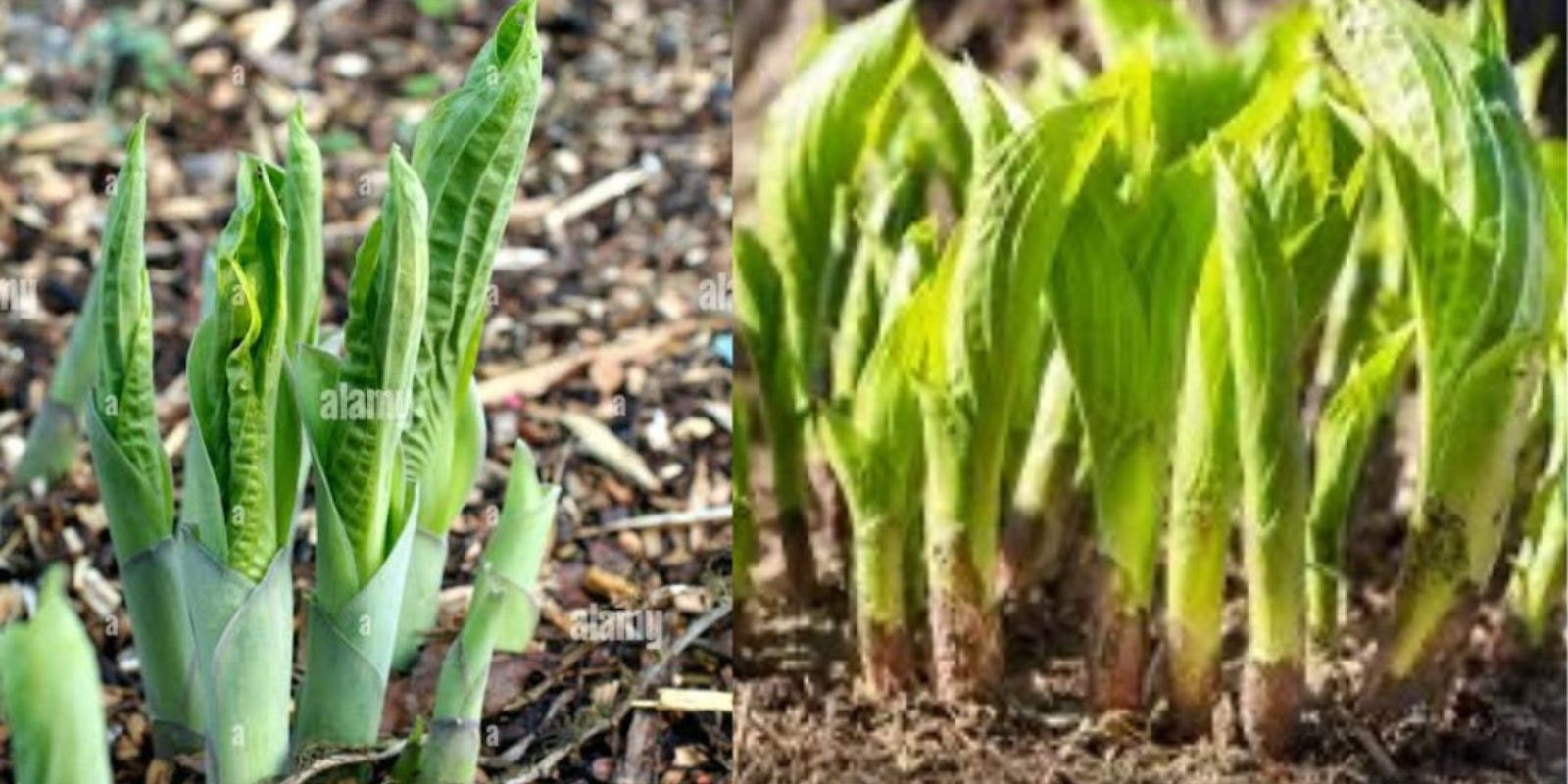Introduction
Hostas are a beloved staple in many gardens, known for their lush foliage and shade-loving nature. But did you know that hostas are not just beautiful—they are also edible? That’s right! These common ornamental plants have long been consumed in certain cultures, particularly in Japan, where they are considered a delicacy.
The best part? Harvesting hostas doesn’t harm the plant. The young shoots will regrow, meaning you can enjoy a fresh, nutritious harvest while still keeping your garden full and vibrant. This article will explore how to grow, harvest, and cook hostas, plus why they deserve a place in your edible garden.
Why Eat Hostas?
While many gardeners focus on traditional edible plants like lettuce, kale, and spinach, hostas are an underrated but nutritious leafy green. Here’s why they’re worth considering:
✅ Nutritious – Hostas contain vitamins A and C, along with antioxidants.
✅ Delicious – The young shoots taste like a mix between asparagus and lettuce, with a mild, slightly sweet flavor.
✅ Sustainable – Unlike some greens that require reseeding, hostas keep coming back every year.
✅ Low-maintenance – Once established, they require little care and thrive in shady spots where other edible plants might struggle.
If you already have hostas growing in your garden, you don’t need to plant anything new—you just need to start harvesting them!
How to Harvest Hostas Without Damaging Your Plants
Since hostas are perennials, harvesting them the right way ensures that they will continue to grow back each year. Follow these steps for a sustainable harvest:
1. Choose the Right Time
- The best time to harvest hosta shoots is early spring when they are still tightly curled (like fiddlehead ferns).
- If you wait too long, the leaves will unfurl and become tougher.
2. Use a Sharp Knife or Scissors
- Cut the young shoots at ground level, leaving the base of the plant intact.
- Avoid pulling or tearing, as this can damage the roots.
3. Harvest Only a Few Shoots Per Plant
- Taking too many shoots at once can weaken the plant.
- For a healthy plant, harvest no more than one-third of the emerging shoots.
4. Let the Plant Regrow
- After harvesting, the plant will send up new shoots in a few weeks.
- This means you can continue to enjoy small harvests throughout the growing season!
How to Cook and Eat Hostas
Now that you have your fresh hosta shoots, what can you do with them? The good news is that hostas are incredibly versatile in the kitchen. You can eat them raw or cooked, much like spinach, asparagus, or fiddlehead ferns.
1. Sautéed Hostas
A quick and easy way to enjoy hostas!
Ingredients:
- Fresh young hosta shoots
- 1 tbsp olive oil or butter
- Salt and pepper to taste
- Garlic (optional)
Instructions:
- Heat the oil or butter in a pan over medium heat.
- Add the hosta shoots and sauté for 3–5 minutes, until tender.
- Season with salt, pepper, and garlic if desired.
- Serve as a side dish or add to a stir-fry.
2. Hosta Tempura
Crispy and delicious!
Ingredients:
- Fresh hosta leaves
- 1 cup flour
- 1 cup cold sparkling water
- 1 egg
- Oil for frying
Instructions:
- Mix flour, egg, and sparkling water to create a light batter.
- Dip the hosta leaves into the batter.
- Fry in hot oil (375°F/190°C) until golden brown.
- Drain on paper towels and serve with dipping sauce.
3. Hosta Stir-Fry
A great way to add greens to your meal!
Ingredients:
- 2 cups hosta shoots, chopped
- 1 bell pepper, sliced
- 1 small onion, sliced
- 2 tbsp soy sauce
- 1 tbsp sesame oil
- 1 tsp ginger, minced
Instructions:
- Heat sesame oil in a pan over medium heat.
- Add onion and ginger, sauté until fragrant.
- Add hosta shoots and bell pepper, stir-fry for 5 minutes.
- Stir in soy sauce and cook for 1 more minute.
- Serve over rice or noodles.
Are All Hostas Edible?
Most hosta varieties are edible, but some are better tasting than others. The best ones for eating include:
- Hosta montana – Commonly eaten in Japan.
- Hosta sieboldiana – Mild and slightly sweet.
- Hosta fortunei – Tender and delicious in spring.
If you’re unsure about your hosta variety, start with a small amount to see how you like the taste.
Growing Hostas for Food
If you don’t already have hostas in your garden but want to grow them for food, here’s what you need to know:
✅ Plant in shade – Hostas thrive in partial to full shade, making them perfect for low-light areas.
✅ Rich, well-draining soil – They prefer moist but not soggy soil.
✅ Mulch to retain moisture – A layer of mulch helps keep the soil cool and moist.
✅ Fertilize lightly – A compost or balanced fertilizer in early spring helps with growth.
✅ Divide every few years – This keeps the plants healthy and productive.
Once established, hostas require very little care—and they’ll reward you with a renewable source of fresh greens every spring!
Final Thoughts: Should You Eat Hostas?
If you’re looking for a new edible plant that’s easy to grow, sustainable, and delicious, hostas are a great option. They provide a free, organic vegetable each year, making them a valuable addition to any edible garden.
Since hostas regrow after harvesting, you won’t harm your plant—so why not give it a try?
👉 Would you try eating hostas? Let us know in the comments!

